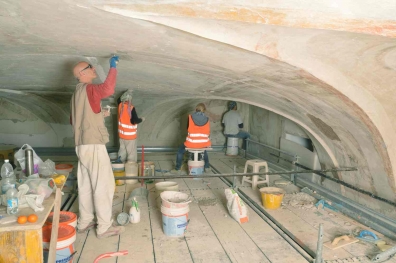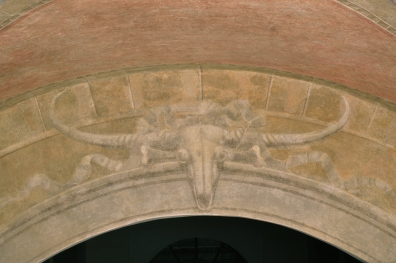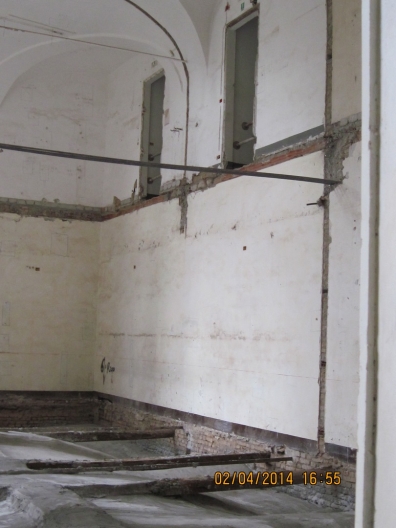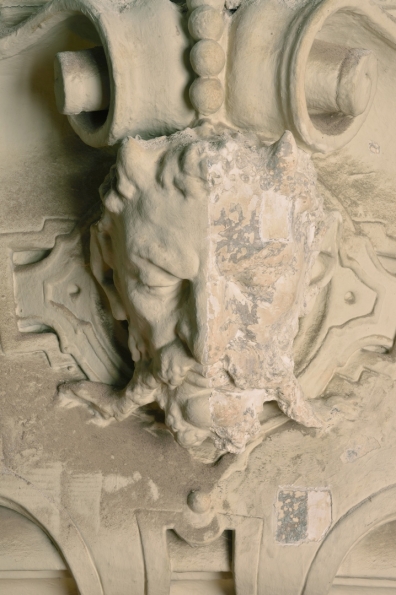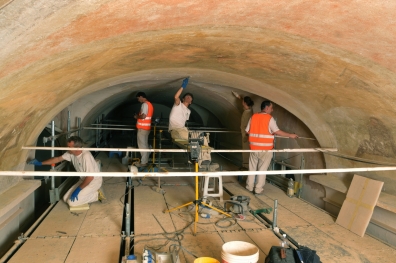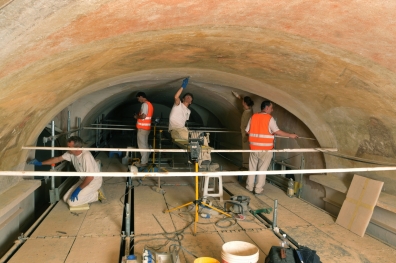Egyptian Museum, restoration of frescoes and historical plasterwork
Turin, Egyptian Museum: The restoration of frescoes and historical plasters in the exhibition areas on the piano nobile
The intervention has constituted a double challenge: technical and organisational, due to the complexity of the work campaign that has revolutionised spaces and uses - with the simultaneous implementation and legalising of the structural, construction, plant design, fitting plans, available for the new Museum and a challenge against time.
Three years of intense work that involved a team composed of about twenty restorers for the recovery of all the fragments of the decorative history of the Palace, intended in its entirety as a Monument.
First through four very hefty campaigns of stratigraphic essays accompanied by precise chemical and physical laboratory analyses, then with the support of a refined archival-documentary research, finally with the restoration intervention it was possible to bring to light the sequence of historiated medallions with portraits of scientist and artist in the two large nineteenth-century halls and again the marmorino vault of hall 1.1 "Deir El Medina" and the fake marbles as framing of the large windows, the double series of monochrome medallions of room 1.2 "Tomb of Kha" and the marmorino plaster of the walls where it is still preserved.
The intervention in the Galleria Sarcofagi has revealed the surprising vault and all the lunettes finely frescoed by Lorenzo Pecheux, Pietro Fea, Giovanni Galliari between the end of the 18th century and the very first years of the 19th century, with the representation of an elegant painted architecture where we find the animal species of the planet at the time known, portrayed for the preparation of the Museum of Natural History.
Last and for this reason even more surprising, was room 1.7 "Late Period" which, once brought back to the original volumes, has revealed in the vault a magnificent perspectival recess with putti and cartouches, enclosed by the imposing cornice painted in trompe l'oeil, vases of flowers and garlands, while fake windows have emerged on the lunettes with the same decorative motifs found on the splayed jambs of the real openings on the Via Accademia delle Scienze side.
With a scalpel and for a development of hundreds of square meters, the recovery of the stucco plastic apparatus of the Scalone Mazzucchetti dating back to the last quarter of the 19th century, which was hugely altered due to the overlapping of protective, repainting layers, deposits of various kinds, compact and tenaciously adhered to the surface.
The overall result of the intervention was appreciated by the main national and international media and admired by the many visitors who, since the inauguration of the New Egyptian Museum (April 1st, 2015) have walked along the restored rooms.
Menu
Certifications
Contacts
E-mail:Telephone: +39 0141.90.91.25
Address: Via Mazzini 8, 14020 Aramengo


